Kerala Kolam, " Contest in Thiruvananthapuram, the abode of Lord Anantha"
Every year at the Padmanabhaswami temple in Trivandrum in Kerala, a Tamil association organises a kolam contest to celebrate an ancestral art and preserve the padi kolam tradition.
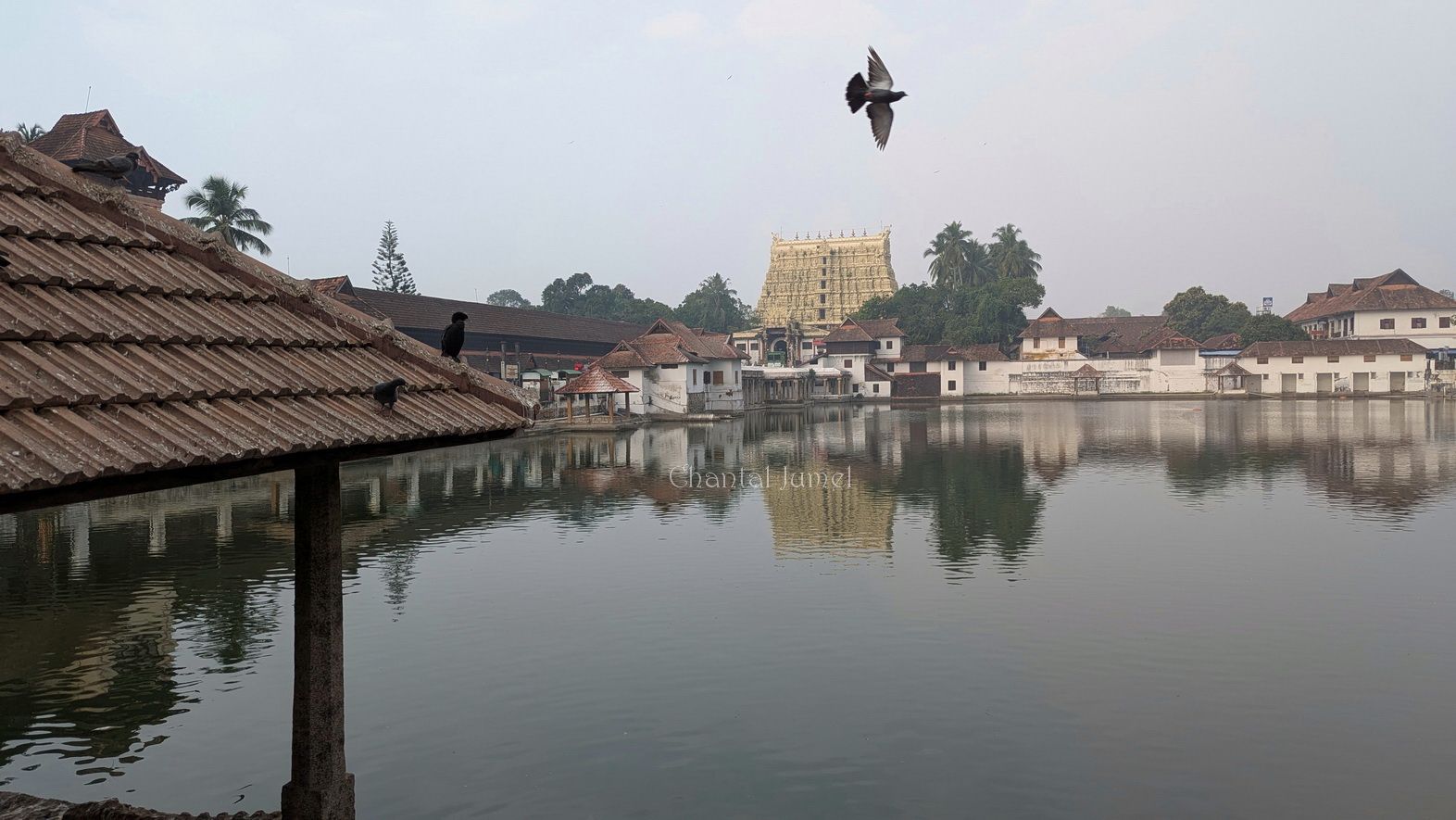
After spending the summer and autumn fine-tuning my third book — a collection of articles on ephemeral paintings of India — I am back in Chennai, ready to resume my graphic wanderings. In early February 2025, my quest led me to Thiruvananthapuram (Trivandrum), the capital of Kerala, whose name means "the city of Lord Anantha". Vishnu, the main deity of the temple, also known as Shree Padmanabhaswami, is depicted reclining on the mythical snake Anantha, with a lotus (padma) emerging from his navel (nabha), symbolising creation.
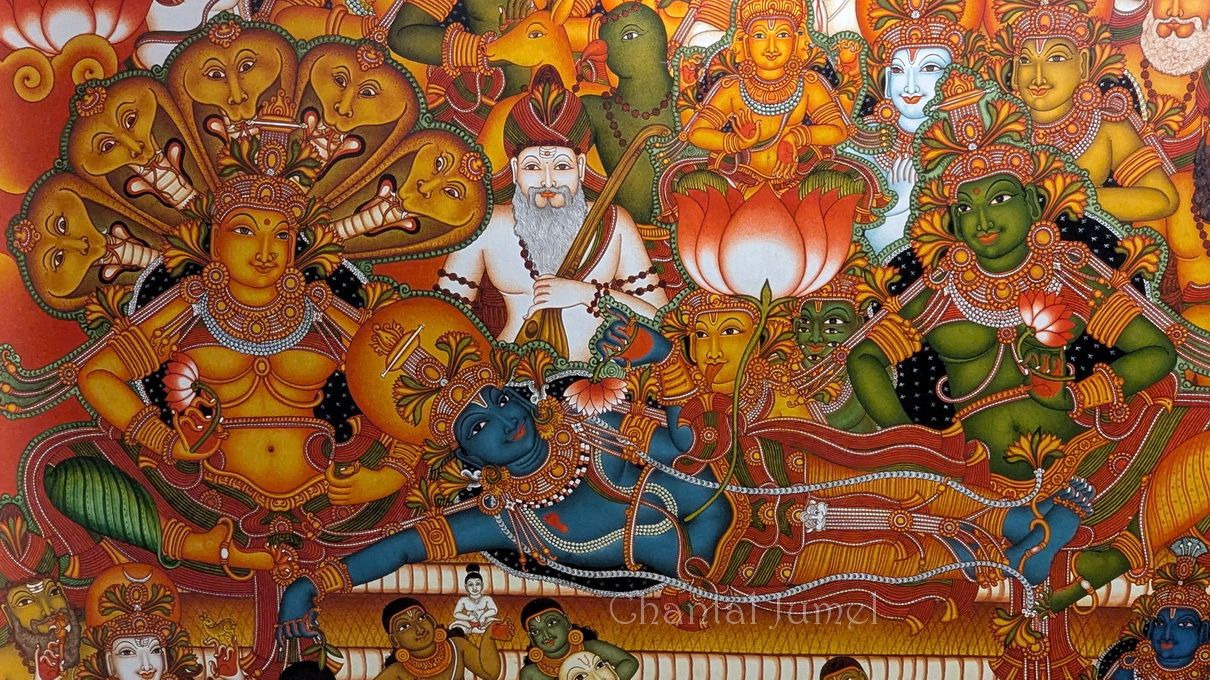
In the forecourt of this temple, a kolam competition is held annually, organised by the women's wing of a Tamil Brahmin association. The Kerala Brahmana Sabha (KBS) is a non-profit organisation that works for the development of Kerala Iyer Brahmins. It organises fairs, sports events, and food festivals to promote the cuisine and traditions of the community. Its women's wing (Vanitha Vibhagom) is actively involved in initiatives to empower Brahmin women in Kerala and supports the preservation of traditional arts through various cultural programmes, including kolam contests.
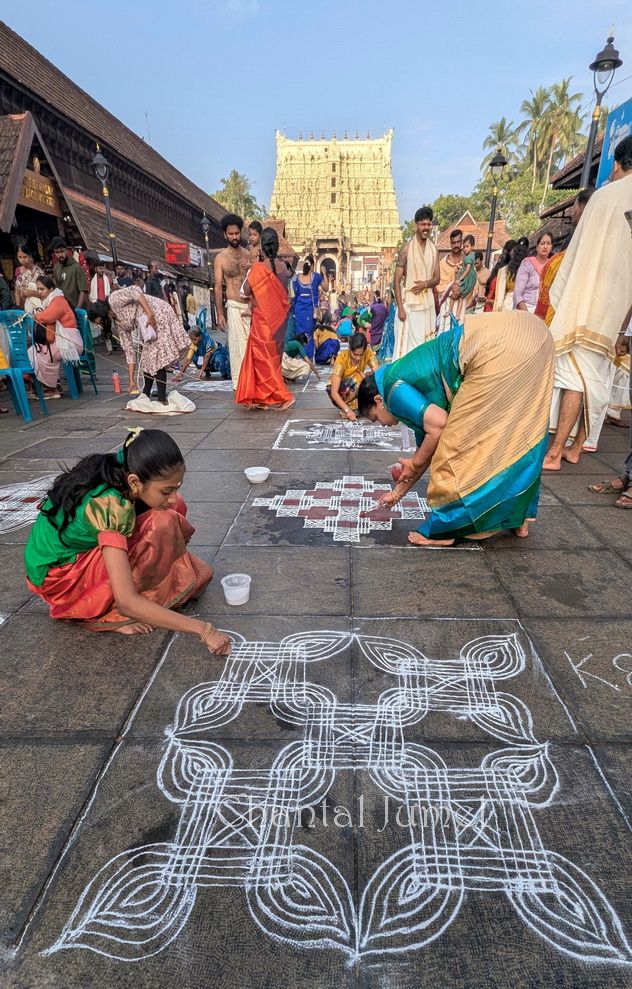
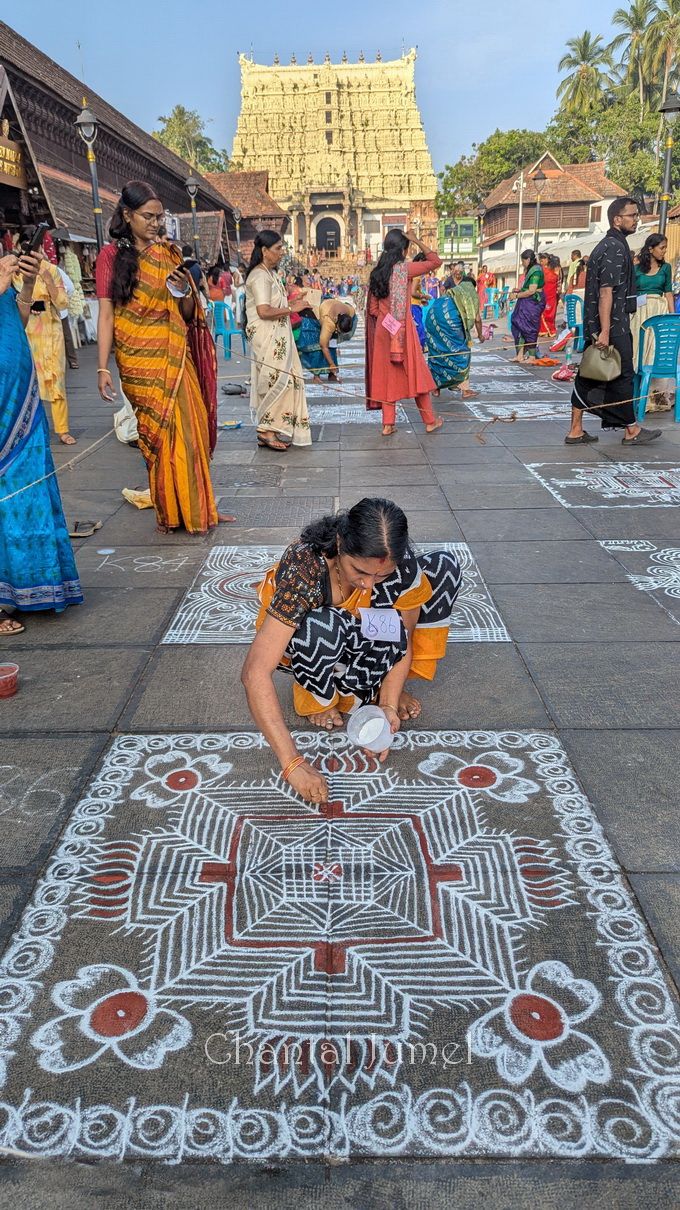
For the occasion, the esplanade transforms into an ephemeral carpet of linear motifs. Striking a balance between geometric rigour and creative freedom, these powdered kolam celebrate the richness and vitality of padi kolam, a graphic repertoire unique to Tamil Brahmin women. In Kerala, women do not draw kolam, except for long-established Tamil communities such as those mentioned in a previous article, notably the women of the Nurani district in Palakkad.
During the reign of the Travancore kings, many Iyer Tamil Brahmins from Tirunelveli in Tamil Nadu, migrated to Palakkad and to Thiruvananthapuram. Some were invited to participate in the Mura Japam ritual, a recitation of the three Vedas at the Shree Padmanabhaswami temple, dedicated to Vishnu. This migration continued for several decades, as it had in other parts of South India, leading to the concentration of Iyer communities around the temple, in agraharam, located on its outskirts. Each agraharam consists of two parallel rows of houses facing each other and organised around a central street.
That day, I meet Geetha S., an acquaintance who will be one of the two judges for the contest. Rising at dawn, I make my way to the forecourt of the Shri Padmanabhaswami temple, which made headlines around the world in June 2011 when a priceless treasure was discovered hidden in its underground chambers.
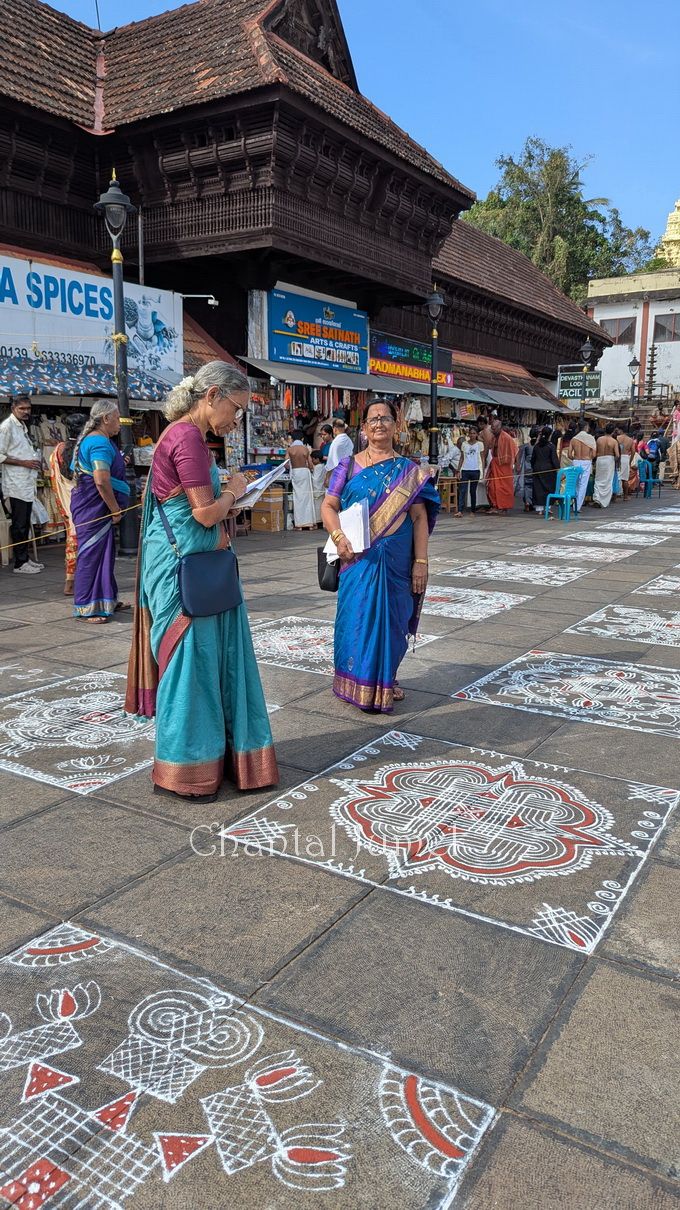
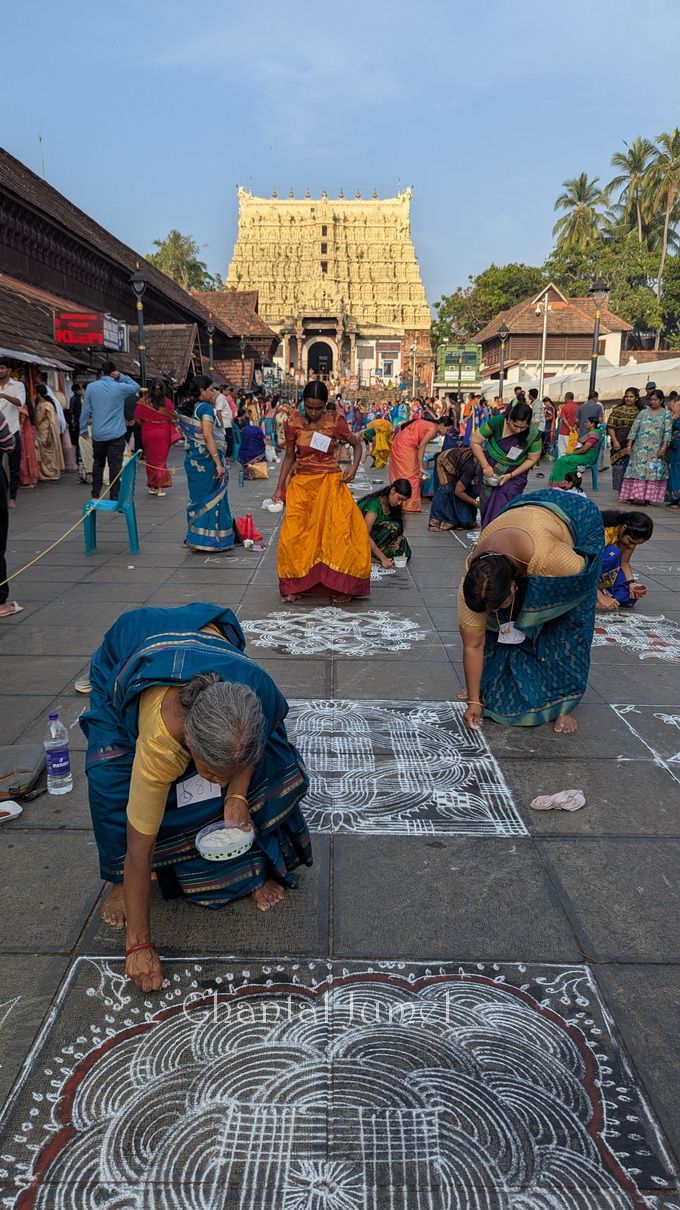
On the orders of the Supreme Court of India, several of the temple's mysterious sealed rooms were opened, revealing riches worth billions of euros: gold statues, jewellery, ancient coins, and other precious artefacts accumulated over the centuries. There is, however, one final chamber whose door is engraved with a serpent motif. It is believed that sages in the past sealed this room by reciting the powerful mantra (sacred formula) "Naga Pasam". Only a priest with perfect mastery of the Garuda mantra (the mythical giant eagle Garuda, enemy of snakes) could open the doors, as any attempt to break in would bring great misfortune. A local tale recounts that in the 1930s, a gang of thieves attempted to loot the temple , only to be repelled by a sudden apparition of snakes.
It is 7.30 in the morning. In the sky, eagles circle and glide around the pyramid-shaped gopuram, as if to pay homage to Garuda, the mythical eagle and mount of God Vishnu. This monumental portal rises to seven storeys high, each level pierced by vertical, window-like openings. At its base, the largest of these marks the main entrance to the sanctuary. What really draws the eye is the massive presence of security forces around the complex. Behind these imposing granite walls lies one of the world's greatest treasures.
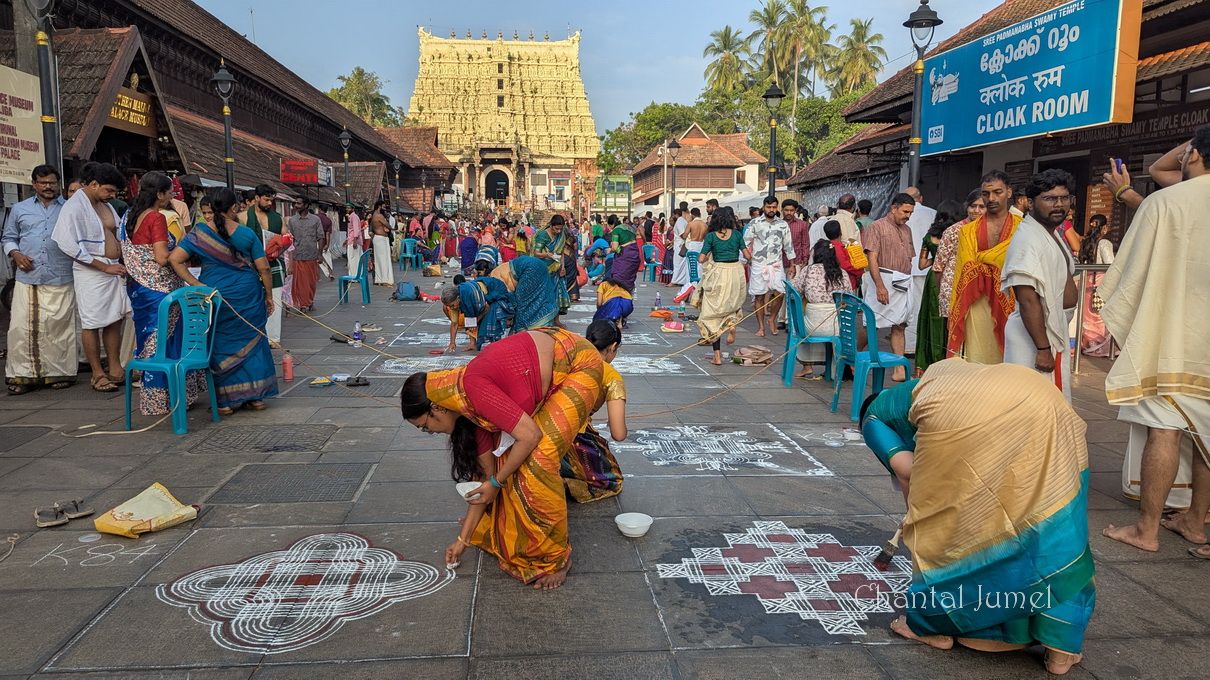
The women began to arrive on the majestic forecourt, making their way to their designated space. About a hundred of them have registered and are preparing to draw. The area is enclosed, and devotees gather as well to see and be seen by the divinity (darshan). The competition begins, and the women, bent over the floor, let the white powder slide between their fingers, flowing in a continuous thread, either light or thick. This type of kolam is made up of a square of parallel lines intersecting at right angles. To expand it, additional strokes are added, from which new lines emerge. Lotuses, conch shells and other decorative motifs enrich the works with the greatest freedom. Like a yantra or mandala, four highly stylised gates, oriented toward the cardinal points, symbolically block the entry of negative or destructive forces.
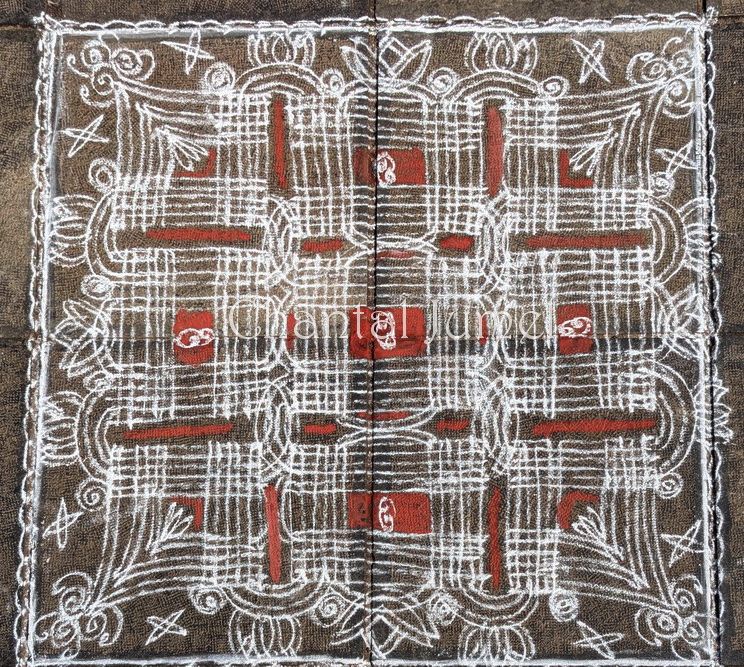
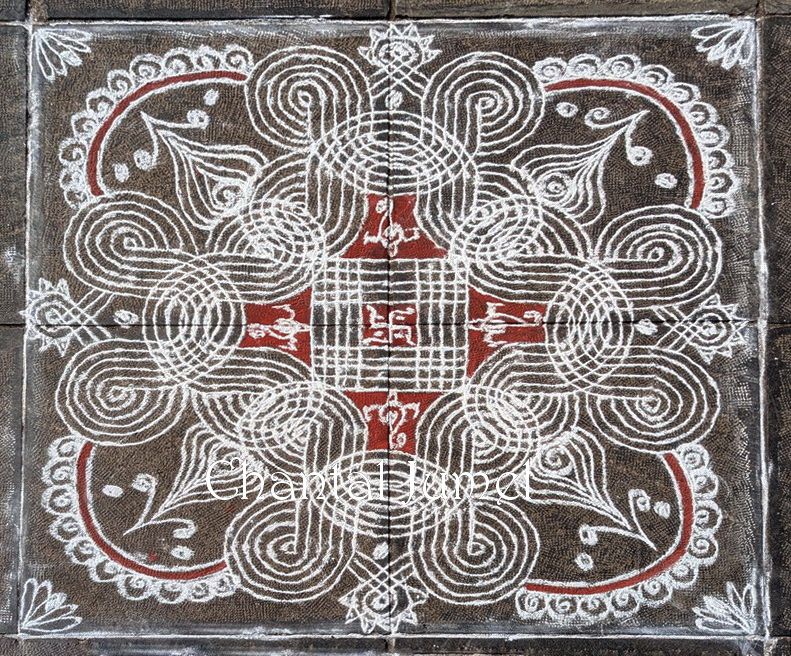
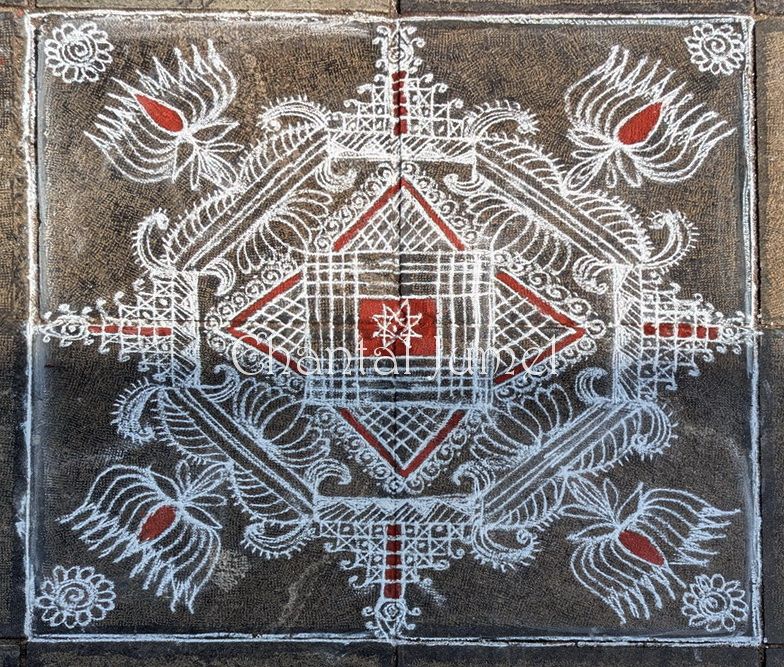

The centre of a line kolam is never left empty; it is always marked with one or many dots, diagonal lines, sun and moon motifs, a pentagon, or a star hexagon. Padi kolam, literally "steps kolam", take their name from the steps surrounding the temple's sacred pool. They are also known as kalyana kolam referring to the designs drawn at the precise spot where a wedding (kalyana) is to be celebrated. The central square of a padi kolam sometime mirrors the floor plan of a Tamil sanctuary or the contours of a temple's sacred tank. The parallel lines that define the contours of the kolam are reminiscent of the numerous enclosures (from three to seven pyramidal entrance towers) that characterise Tamil temples. The padi kolam sanctuary seems to be the projection of the temple and its values of prestige, reputation, and guarantor of moral and social order.
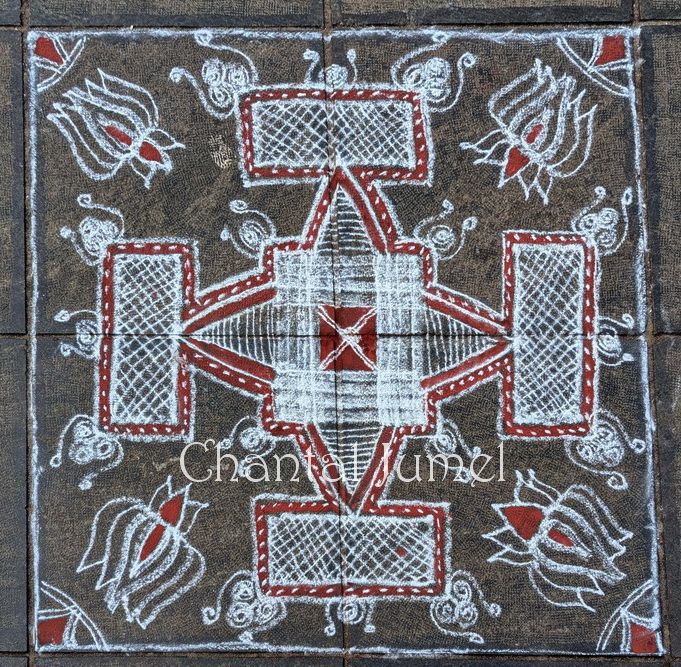
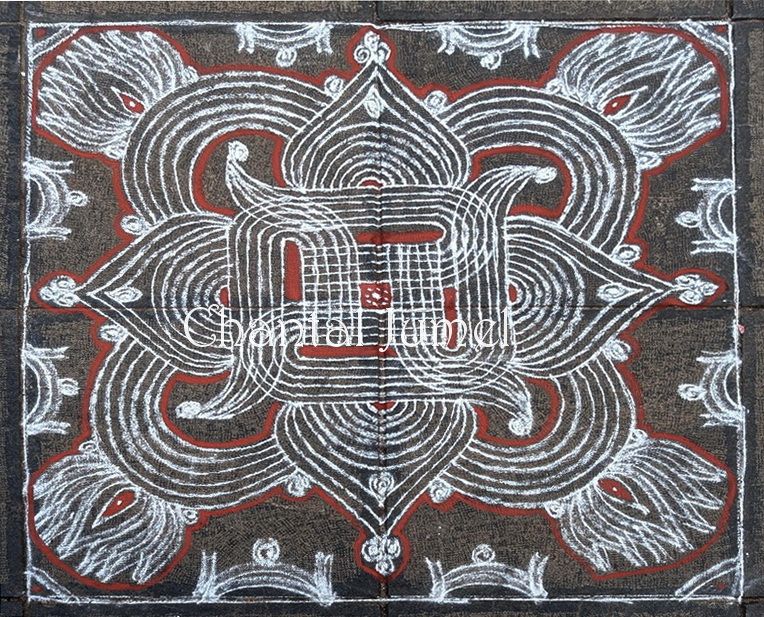
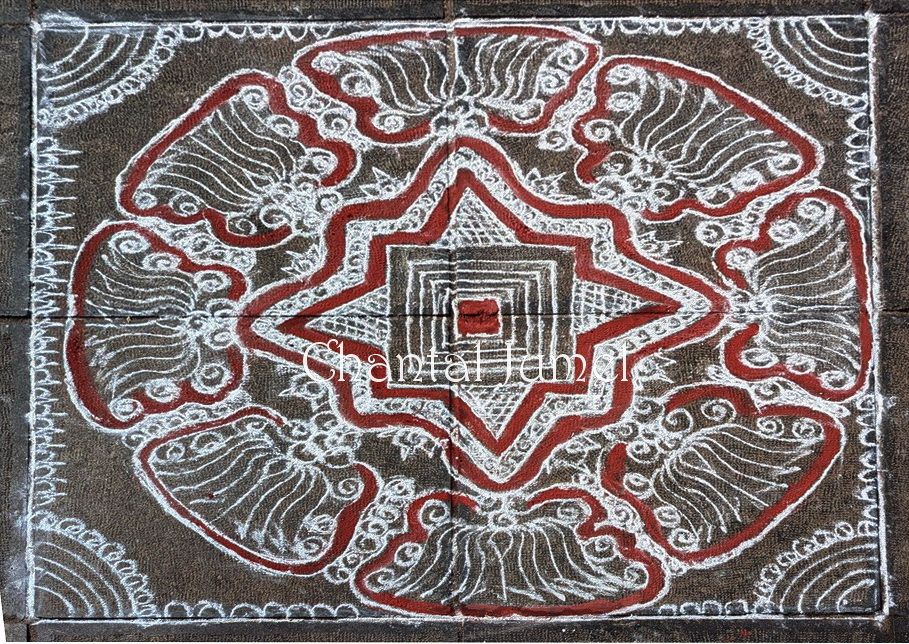
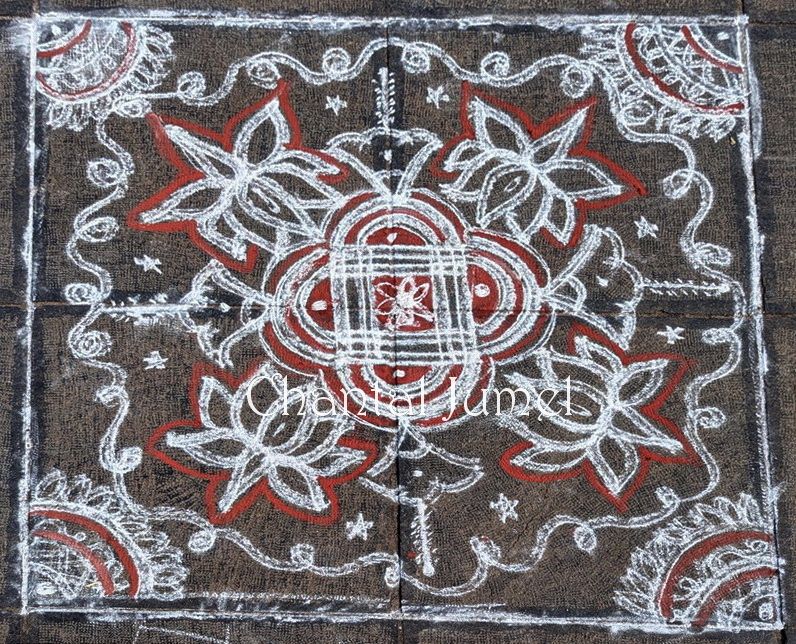
It's almost 10am and the heat in the square is becoming unbearable. The temperature rises, beads of sweat glisten on foreheads and faces grow tense under the blazing sun. Most participants have completed their kolam and are now adding the final touch: a red line drawn with a brush soaked in a mixture of iron oxide and water (kavi), enhancing and magnifying the drawing.
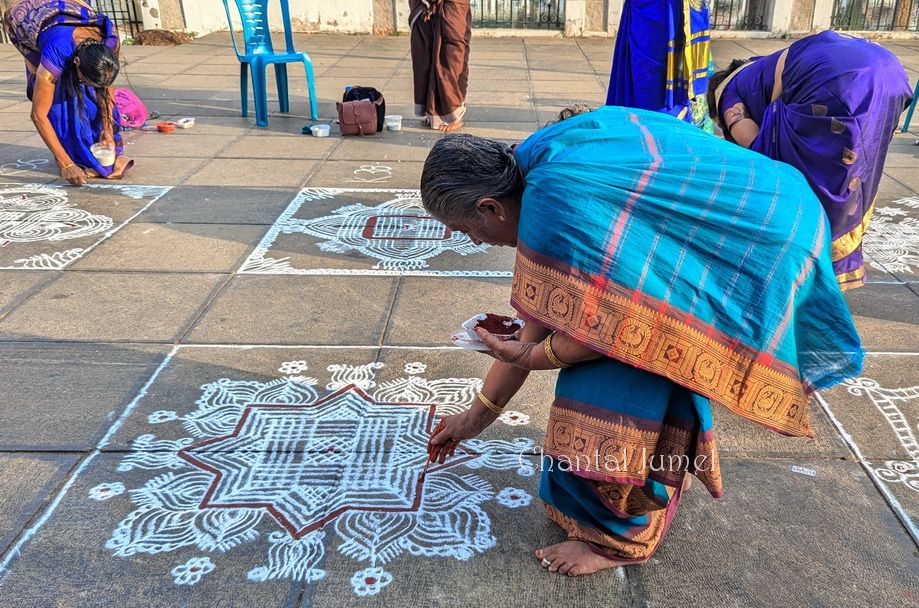
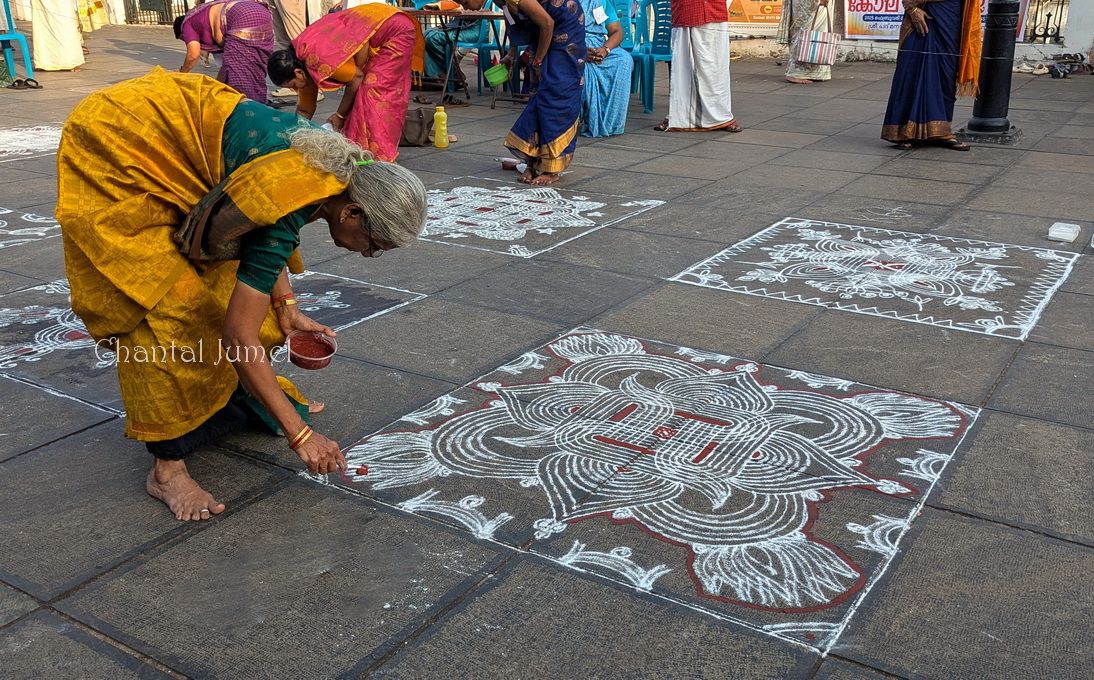
Despite the splendour of the kolam, many devotees linger only briefly. They arrive in groups, dressed in the traditional attire required to enter the temple. One photo session follows another, with fervent poses, hands clasped in studied humility. Selfies abound, capturing the moment from every angle, with the imposing silhouette of the temple and kolam as a backdrop. It is hard not to feel both perplexed and disappointed by this crowd, where the moment captured - hands clasped in a gesture of devotion - often seems to take precedence over the simple act of pausing, observing, and truly marvelling at the meticulous work of the women.

But on this day, the real treasure lay neither in the shrine's hidden riches nor in the fleeting images shared on the screens. It resided in the silent graphical offering of the women, who perpetuated the fervour of an infinitely precious ancestral gesture.

Follow the links...
